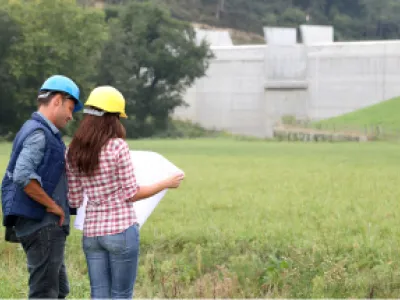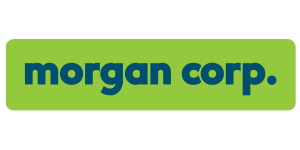As dam failures and incidents occur both nationally and internationally, there is a pressing need to understand the underlying causes of failure to help minimize such occurrences in the future. Current information on historical dam incidents is sometimes scattered, incomplete, missing, or misleading – making it difficult for owners and practitioners to easily access meaningful information that could assist them with critical design and operational decisions. If lessons learned and best practices are not effectively communicated, there is a possibility that poor practices will be repeated, and preventable incidents will not be averted.
Presented within DamFailures.org are links to individual case studies and 'lessons learned' pages that summarize historical dam incidents and failures and the valuable information gleaned from them. Each page contains background and description, photographs, videos, best practices, and other resources related to the case study or lessons learned being addressed. The content of this website encompasses a range of failure modes, dam types, and dam safety topics, including best practices regarding engineering and design practices, human factors, emergency planning and response, operation and maintenance, and regulatory issues.
The site now has over 100 studies, including more than 70 case studies and 40 lessons learned!
Thank you to all the contributors, the ASDSO Dam Failures and Incidents Committee, and the FEMA National Dam Safety Program, which provides research funding.
Case Studies
Carsington Dam (United Kingdom, 1984)
Researcher: Michael Bennett, P.E.
Reviewer: Jerry Pascoe, P.E., G.E.
The Carsington Dam’s sliding failure in June 1984 as it neared completion resulted in neither flooding nor loss of life but represented the culmination of error-filled design and construction processes. The design team did not meet the geotechnical standard of care, failing to consider progressive shear failure, probable slip surfaces, preexisting shear planes within the core clay, and acid drainage problems (which led to four construction workers dying of CO2 poisoning). The designers also included a sliding-prone “boot” within the clay’s core. The contractor made mistakes during construction, most notably compacting the embankment material well wet of optimum, but had well-founded concerns about the design and even hired an outside consultant to investigate them. However, while the consultant validated these concerns, the designer ignored them. The resulting failure led to an extensive forensic investigation that led to improved design procedures for dams, most notably regarding the brittleness of clays, progressive failure within embankments, and finite element modeling (FEM) analyses. These collectively proved valuable in designing and constructing a replacement Carsington Dam, which stands to this day.
Abu Mansour & Al-Bilad Dams (Libya, 2023)
Researcher: Michael Bennett, P.E.
Reviewers: William Johnstone, Ph.D, P.Eng. & Paul Risher, P.E.
The Abu Mansour and Al-Bilad Dams near Derna, Libya failed on September 11th, 2023, following a rainstorm with an estimated annual probability of less than 0.1% that dumped 14 inches of rain onto the region. The resulting flash flood in the Wadi Derna riverbed overtopped both dams with several feet of water, resulting in a mammoth flood wave that killed roughly 12,000 people. Maintenance issues in both dams had been noted for decades prior to the disaster, and their spillways were undersized. However, political instability kept necessary repairs and retrofits from being made. Imprudent development practices compounded these problems. The wake of the failures has offered little hope of meaningful long-term solutions, especially given Libya’s ongoing political tumult.
Kingsley Dam (Nebraska, 1972)
Researchers: Tim Gokie, P.E. & Michael A. Drain, P.E.
Reviewer: A. Tom MacDougall, P.E.
Kingsley Dam is located on the North Platte River in western Nebraska. At 163 feet (50 m) tall and over three miles long, it is the largest dam in Nebraska. On May 1st and 2nd, 1972, a 30-hour windstorm battered and eroded the upstream face of the dam. After breaking through the upstream wave protection, waves removed large portions of the upstream shell, eventually leading to the collapse of more than 400 feet (120 m) of the parapet wall along the crest of the dam. Fearing the dam would fail, residents in the downstream town of Keystone evacuated their homes and headed for higher ground. Crews were immediately summoned to lower the reservoir and begin emergency repairs. Though the winds eventually subsided, and the dam ultimately did not fail, the incident highlights the significant damage a prolonged windstorm can inflict on an earthen dam.
Feijão Dam B-1 (Brazil, 2019)
Researcher: Meghan Walter, P.E.
Reviewers: William Johnstone, Ph.D., P.E. & John W. France, P.E.
At 12:28pm on January 25, 2019, the B-1 tailings storage dam at the Córrego do Feijão iron ore mine near Brumadinho, Brazil, failed catastrophically, killing 272 people and causing extreme environmental damage in the Paraopeba River watershed. When the dam failed, 9.7 million m3 of liquefied mining waste was suddenly released downstream, engulfing the mine’s railway, maintenance and administration area, including a canteen where miners were having lunch. The tailings progressed rapidly downstream, destroying homes, farms, and roads. The mudflow covered an area equivalent to 450 football fields. The failure was captured on video by the mine’s onsite video cameras, showing a slope failure that developed across 80% of the face of the dam in about 5 seconds. The initial failure was followed by a series of retrogressive slope failures that progressed upwards through the tailings. Prior to the failure, the dam was extensively monitored using survey monuments along the crest of the dam, inclinometers, and piezometers. None of these methods detected any significant deformations prior to failure. Disposal of tailings at the dam stopped three years before the failure. Investigations concluded that the failure was the result of flow liquefaction within the tailings in the dam resulting from the presence of loose, saturated, heavy, and brittle tailings under high shear stress conditions. This resulted in a marginally stable dam that was close to failure in undrained conditions. The mine owner, Vale S.A., Brazil’s biggest miner, was ordered to pay $7 billion in damages to the affected communities.
Harmony Gold Mine No. 4 Tailings Dam (South Africa, 1994)
Researchers: Meghan Walter, P.E., Riley Manwaring, EIT, & Irfan Alvi, P.E.
Reviewer: Dino Bernardi, P.E.
Construction of the Harmony Gold Mine No. 4 tailings dam began in 1978 and was sited 300 m (1,000 feet) away from the suburban town of Merriespruit in South Africa. The dam was built using the upstream semi-dry paddock method of construction, reaching a height of 31 m (102 feet). After 16 years of construction and operation, the dam failed on February 22, 1994, resulting in a 630,000 m3 (500 acre-feet) liquefied outflow which swept 4 km (2 miles) through the town, causing 17 fatalities, destruction of 80 properties, and widespread environmental damage.
A few hours before the failure, a storm produced approximately 50 mm (2 inches) of rain over the dam in just 30 minutes. Due to very low freeboard in the dam, this rainfall resulted in overtopping of the dam, and the resulting overflow runoff was observed in the town for at least 2 hours before the failure. The overtopping caused erosion of the downstream face of the dam, which is believed to have resulted in progressive slope failures, which then triggered a static liquefaction flow failure of the metastable tailings.
This catastrophic failure was not due to an extreme natural event nor ‘bad luck’. Rather, the failure was preventable and was ultimately attributable to human factors, specifically a series of poorly judged managerial and operational decisions which spanned years prior to the failure and stemmed from a poor economic climate and cost-cutting pressures. Evidencing this, a Ministry of Justice inquiry found the dam owner, the operator, and six of their employees guilty of negligence and fines were imposed. An array of physical and human factors contributed to the failure of Harmony Gold Mine No. 4 tailings dam, and warning signs which were not heeded. As a result, post-failure reforms in regulation and mining industry practices which were implemented in South Africa.
Lessons Learned
Past successful dam performance does not guarantee future successful performance.
Researcher: Seth Thompson, P.E.
Reviewer: Mark Baker, P.E.
Decades of incident-free operation can create false confidence that dams will remain safe. This article shows why past performance is a poor predictor of future safety through three technical case studies. At Lawn Lake Dam (1982), leakage at a buried outlet works joint likely initiated internal erosion (piping) that led to embankment collapse, compounded by infrequent inspections of a remote site. At Oroville Dam (2017), long-standing leakage, thin slab sections above drains, joints without waterstops, shallow anchors, and weathered foundation zones enabled slab uplift and rapid foundation erosion, even though the project had safely passed higher flows before. At Spencer Dam (2019), an extreme ice-run destroyed the radial gates and limited operator access, producing overtopping and two embankment breaches; earlier ice-damage history was obscured by lost records and staff turnover. Human factors, such as complacency, normalization of abnormal conditions, and eroded institutional memory, help explain how apparent success masks growing risk. The article closes with actions to avoid this false sense of security: update hydrologic and ice-hazard assumptions and design allowances; target inspections and maintenance on known weak points and operability under adverse conditions; preserve records and develop a learning-oriented safety culture; and add redundancy to maintain control when conditions deteriorate.
The Study of Past Dam Failures and Incidents is Essential for Keeping Today’s Dams Safe.
Researcher: Mark Baker, P.E.
Reviewers: Paul Risher, P.E. & John France, P.E.
This lesson learned explains why and how dam practitioner review of past dam failures and incidents improves their ability to ensure the safety of planned or existing dams. This lesson learned defines terms used, lists the multiple benefits of studying dam failures, provides sources of dam failure/incident cases, and offers suggestions on how to conduct dam failure/incident training for a variety of audiences. Beyond technical dam practitioners, other audiences benefit from familiarity with dam failures and incidents including dam owners and their executives, dam safety regulators, and the public downstream from dams so they are aware of the hazards of dams and what to do in a dam emergency.






































